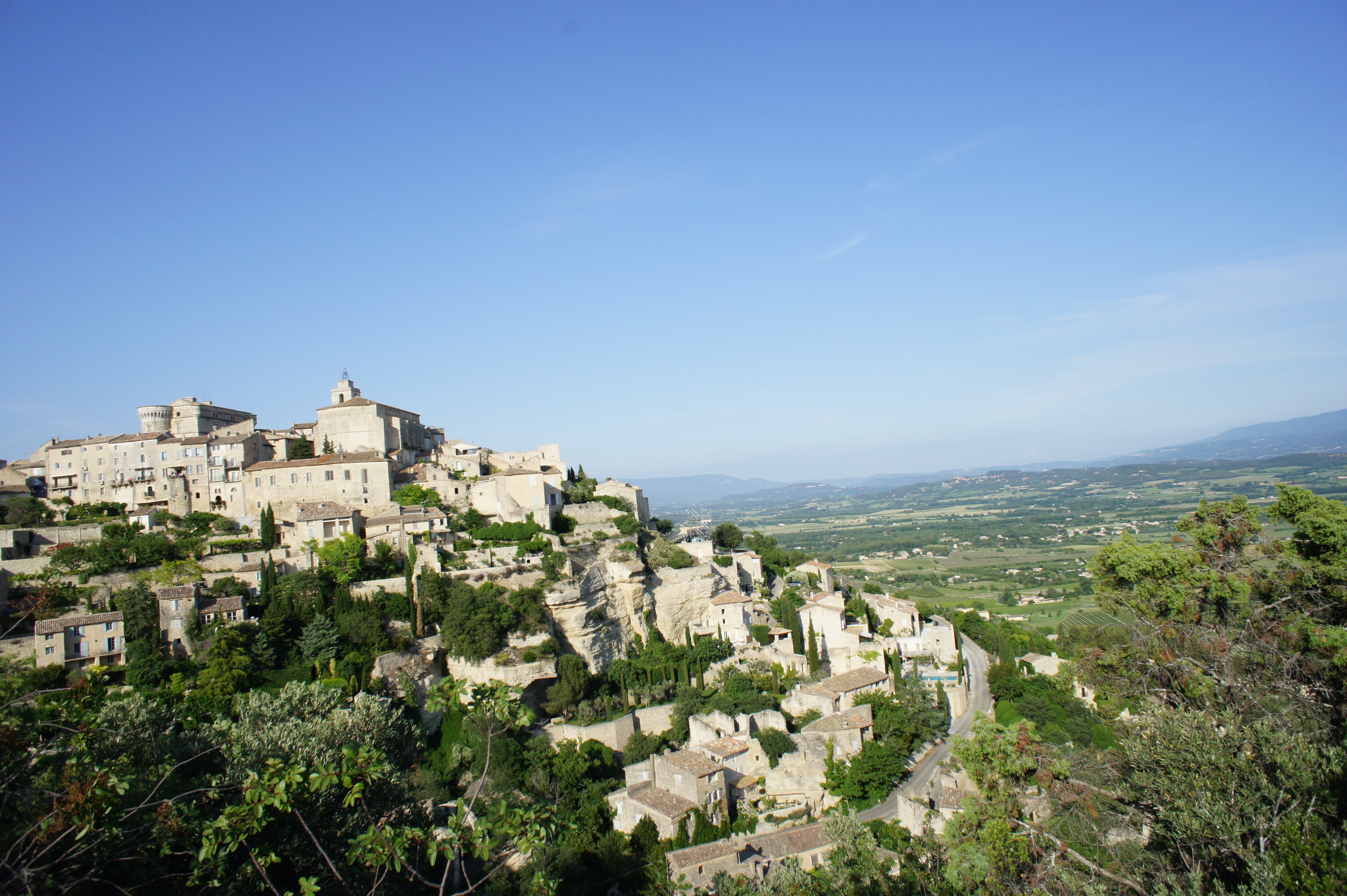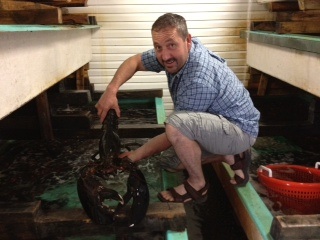The Road Trip was designed with places like South Dakota in mind. Venture to Rapid City and you’ll have the chance to cruise with relatively little traffic, up and down the pine forests and granite passes of the Black Hills and through the awesome lunar-like landscape of Badlands National Park. Add the most famous sculpture in the country, Mount Rushmore National Monument, and the herds of bison and bighorn sheep in Custer State Park, and you have a driving destination that’s hard to top. And all of these sights are in a state known for its affordability. Whaddya waiting for?
No reason to rush out of Rapid City to Mount Rushmore. It’s only a 25 mile drive. Walk around and admire the retro Western architecture of the city, founded in 1876 by gold prospectors. On Main Street, Prairie Edge is a two-level 1886 building filled with South Dakota-made quilts and pottery and indigenous art. Buckin Pony Boutique will outfit you in proper Western attire for the trip. Just down Sixth Street, Tally’s is a local hangout, good for breakfast or a slice of pie.
The faces of Presidents Washington, Jefferson, Theodore Roosevelt, and Abraham Lincoln recently received a power wash, so they should be spanking clean for your visit. Be sure to stay for the 9 pm nightly lighting ceremony, which includes a short film on the four presidents and the playing of the national anthem.
Grab some pancakes and a side of buffalo sausage at The Powder House, a log cabin in Keystone. Then head 17 miles southwest on Highway 16 to the Crazy Horse Memorial. This vast sculpture, billed as the world’s largest, was started in 1948 and is still not complete! You can see the warrior on horseback and the outline of his outstretched hand pointing out towards this great land of the Sioux.
From Crazy Horse, take Highway 87 as it switchbacks through forest and squeezes through granite on one of the most exciting drives in the country, the so-called Needles Highway. More buffalo await, in the form of burgers and stews, at the Lakota Dining Room in the Sylvan Lake Resort. The stone and timber hotel offers exquisite views of Harney Peak. Standing at 7,242 feet, it’s the highest peak east of the Rockies.
Next morning, wake up and see big game on the 18-mile Wildlife Loop Road through Custer State Park. Yellowstone might get all the hype, but Custer has its own herds of buffalo as well as bighorn sheep, mountain goats, colonies of prairie dogs, and wild donkeys just itching for a free handout.
The next day, rent bikes at Trailside Bikes in the nearby city of Custer. The George S. Mickelson Rail Trail follows the length of the former Burlington-Northern rail line from Deadwood all the way to Edgemont. In Custer, you can jump on the trail at Harbach City Park.
Roughly sixty miles east of Rapid City on I-90, you reach the town of Wall. Back in the Depression, Wall Drug gave away free ice water. Now the megastore is a souvenir emporium, good for all those tacky gifts you want to bring back the neighbors. You can opt for breakfast, lunch, or dinner at the 500-seat restaurant. Roast beef with all the fixins will set you back about $8.
Head south on Wall on Route 240 to reach the Pinnacles Entrance to Badlands. Soon after entering, you’ll be mesmerized by this phantasmagoric blend of topography—multi-hued rock steeples, massive canyons, and jagged peaks. The Loop Road (Route 240) is a 41-mile jaunt that leads to many of Badlands’ awe-inspiring overlooks like Conata Basin and Prairie Wind.
Just south of the Badlands is the Pine Ridge Indian Reservation, home to the large Lakota population. You can visit the site of Wounded Knee or better yet, head 18 miles south to the Red Cloud Indian School in the town of Pine Ridge. They feature a wonderful collection of Native American arts in the Heritage Center. An adjacent gift shop, selling handmade Lakota items, plays an important part in the local economy. From here, it’s an easy 90-minute cruise back to Rapid City.
 Known for its award-winning Rieslings, the Finger Lakes deserve its reputation as one of the best spots in America to go wine tasting. Yet, its mix of rolling hills and lakes also lends itself well to adventure, especially in September when the summer crowds are gone. At the southern end of Seneca Lake, we hiked alongside a handful of waterfalls in the famous gorge of Watkins Glen. The next morning, my wife and I kayaked through a cattail-laden marsh and saw countless herons, turtles, and a beaver. Talk about adventure—a 40-pound carp jumped out of the marsh and slammed against my arm as I shrieked. But my favorite part of the weeklong trip was a quiet bike ride along a peninsula that juts into Keuka Lake. Start your ride from Keuka College and follow East and West Bluff Roads as they pass the small waterfront cottages with cute names like Hide N’ Seek. There’s one killer hill on the 20-mile ride that takes you atop a bluff, before cruising downhill back to the college. Afterwards, we rewarded ourselves with a lobster roll and glass of semi-dry Riesling at Heron Hill’s outdoor café. We were fortunate to book the next two nights at the Black Sheep Inn in Hammondsport, on the northern tip of Keuka Lake. Owners Debbie Meritsky and Marc Rotman spent over 6 years refurbishing the rare octagonal-shaped house, which celebrated its 150th birthday in 2009.
Known for its award-winning Rieslings, the Finger Lakes deserve its reputation as one of the best spots in America to go wine tasting. Yet, its mix of rolling hills and lakes also lends itself well to adventure, especially in September when the summer crowds are gone. At the southern end of Seneca Lake, we hiked alongside a handful of waterfalls in the famous gorge of Watkins Glen. The next morning, my wife and I kayaked through a cattail-laden marsh and saw countless herons, turtles, and a beaver. Talk about adventure—a 40-pound carp jumped out of the marsh and slammed against my arm as I shrieked. But my favorite part of the weeklong trip was a quiet bike ride along a peninsula that juts into Keuka Lake. Start your ride from Keuka College and follow East and West Bluff Roads as they pass the small waterfront cottages with cute names like Hide N’ Seek. There’s one killer hill on the 20-mile ride that takes you atop a bluff, before cruising downhill back to the college. Afterwards, we rewarded ourselves with a lobster roll and glass of semi-dry Riesling at Heron Hill’s outdoor café. We were fortunate to book the next two nights at the Black Sheep Inn in Hammondsport, on the northern tip of Keuka Lake. Owners Debbie Meritsky and Marc Rotman spent over 6 years refurbishing the rare octagonal-shaped house, which celebrated its 150th birthday in 2009.
 Guest Post and Photo by Jessica Bloom Galen
Guest Post and Photo by Jessica Bloom Galen All it takes is a one-minute conversation with Dr. Mathieu Duguay to understand how he persuaded the finest harpsichordists and cellists in Amsterdam, New York, and Berlin to come perform Bach in a 300-seat seat church on the island of Lamèque. A genuine lover of music, Duguay knows the most talented period performers of the day and has flown them over to New Brunswick to play in a church, acclaimed for its exceptional acoustics and vibrantly painted interior. Today, the
All it takes is a one-minute conversation with Dr. Mathieu Duguay to understand how he persuaded the finest harpsichordists and cellists in Amsterdam, New York, and Berlin to come perform Bach in a 300-seat seat church on the island of Lamèque. A genuine lover of music, Duguay knows the most talented period performers of the day and has flown them over to New Brunswick to play in a church, acclaimed for its exceptional acoustics and vibrantly painted interior. Today, the